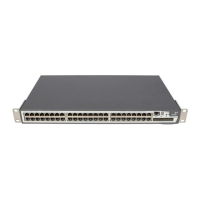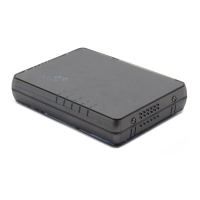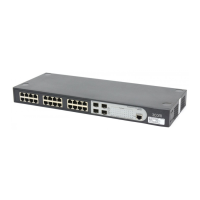30 CHAPTER 1: USING SYSTEM ACCESS COMMANDS
Parameter
type: Enter the type and type number of the user interface to be reset.
number: Enter the index number of the user interface to be reset.
Description
Use this command to reset a specified user interface to its default settings. The
user interface will be disconnected after the reset.
Use free user-interface
type
to reset the interface with the specified type
and type number to its default settings. Use
free user-interface
number
to
reset the interface with the specified index number to its default settings.
You cannot use this command on the current user interface.
Example
To reset user interface AUX 1 from another user interface on the Switch , enter the
following:
<SW5500>free user-interface aux 1
After the command is executed, user interface AUX 1 is disconnected. When you
next log in using user interface AUX 1, it opens using the default settings .
header Syntax
header { shell | incoming | login }
text
undo header { shell | incoming | login }
View
System view
Parameter
login: Login information in case of authentication. It is displayed before the user
is prompted to enter user name and password.
shell: User conversation established header, the information output after user
conversation has been established. If authentication is required, it is prompted
after the user passes authentication..
incoming: Login header, the information output after a Modem user logs in. If
authentication is required, it is prompted after the user passes authentication. In
this case, no shell information is output..
text: Specifies the title text. If you do not choose any keyword in the command,
the system displays the login information by default. The system supports two
types of input mode: you can input all the text in one line (a maximum of 256
characters, including command key word, can be entered); or you can input all the
text in several lines using the <Enter> key, and more than 256 characters can be
entered. The text starts and ends with the first character. After entering the last
character, press the <Enter> key to exit the interactive process.

